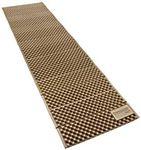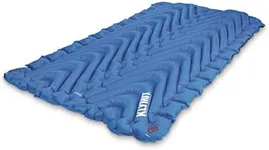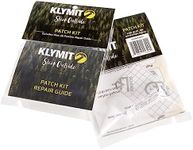Buying Guide for the Best Sleeping Mat
Choosing the right sleeping mat is crucial for a comfortable and restful night's sleep, especially when you're out camping or hiking. A good sleeping mat provides insulation from the cold ground, cushioning for your body, and can significantly enhance your overall outdoor experience. To find the best sleeping mat for you, consider the following key specifications and how they align with your needs and preferences.TypeSleeping mats come in different types, including self-inflating mats, air mats, and closed-cell foam mats. Self-inflating mats offer a balance of comfort and insulation, air mats are lightweight and compact but may require more effort to inflate, and closed-cell foam mats are durable and provide good insulation but can be bulky. Choose a type based on your priorities: comfort, weight, and ease of use.
R-ValueThe R-value measures the sleeping mat's ability to insulate you from the cold ground. Higher R-values indicate better insulation. For summer camping, an R-value of 1-3 is usually sufficient. For three-season use, look for an R-value of 3-5. For winter camping, an R-value of 5 or higher is recommended. Consider the typical weather conditions you'll be facing to determine the appropriate R-value for your needs.
WeightThe weight of the sleeping mat is important, especially if you plan to carry it on long hikes or backpacking trips. Lightweight mats (under 1 pound) are ideal for backpacking, while heavier mats (over 2 pounds) may offer more comfort and durability but are better suited for car camping. Balance the need for portability with the level of comfort you desire.
ThicknessThickness affects both comfort and insulation. Thicker mats (over 2 inches) provide more cushioning and are better for side sleepers or those who need extra comfort. Thinner mats (under 1 inch) are lighter and more compact but may not offer as much comfort. Consider your sleeping position and comfort preferences when choosing the thickness of your mat.
Packed SizePacked size refers to how small the mat can be compressed for storage and transport. A smaller packed size is beneficial for backpacking and limited storage space. Self-inflating and air mats typically pack down smaller than closed-cell foam mats. Evaluate your storage and transport needs to determine the ideal packed size for your sleeping mat.
DurabilityDurability is determined by the materials and construction of the sleeping mat. Mats made from higher denier fabrics are generally more durable and resistant to punctures. If you plan to use the mat in rugged conditions or on rough terrain, prioritize durability. For casual or occasional use, lighter and less durable options may suffice.
Ease of InflationEase of inflation can vary between different types of mats. Self-inflating mats are convenient as they partially inflate on their own, requiring minimal effort. Air mats may require manual inflation, either by mouth or with a pump. Closed-cell foam mats do not require inflation. Consider how much effort you're willing to put into setting up your sleeping mat when making your choice.




















